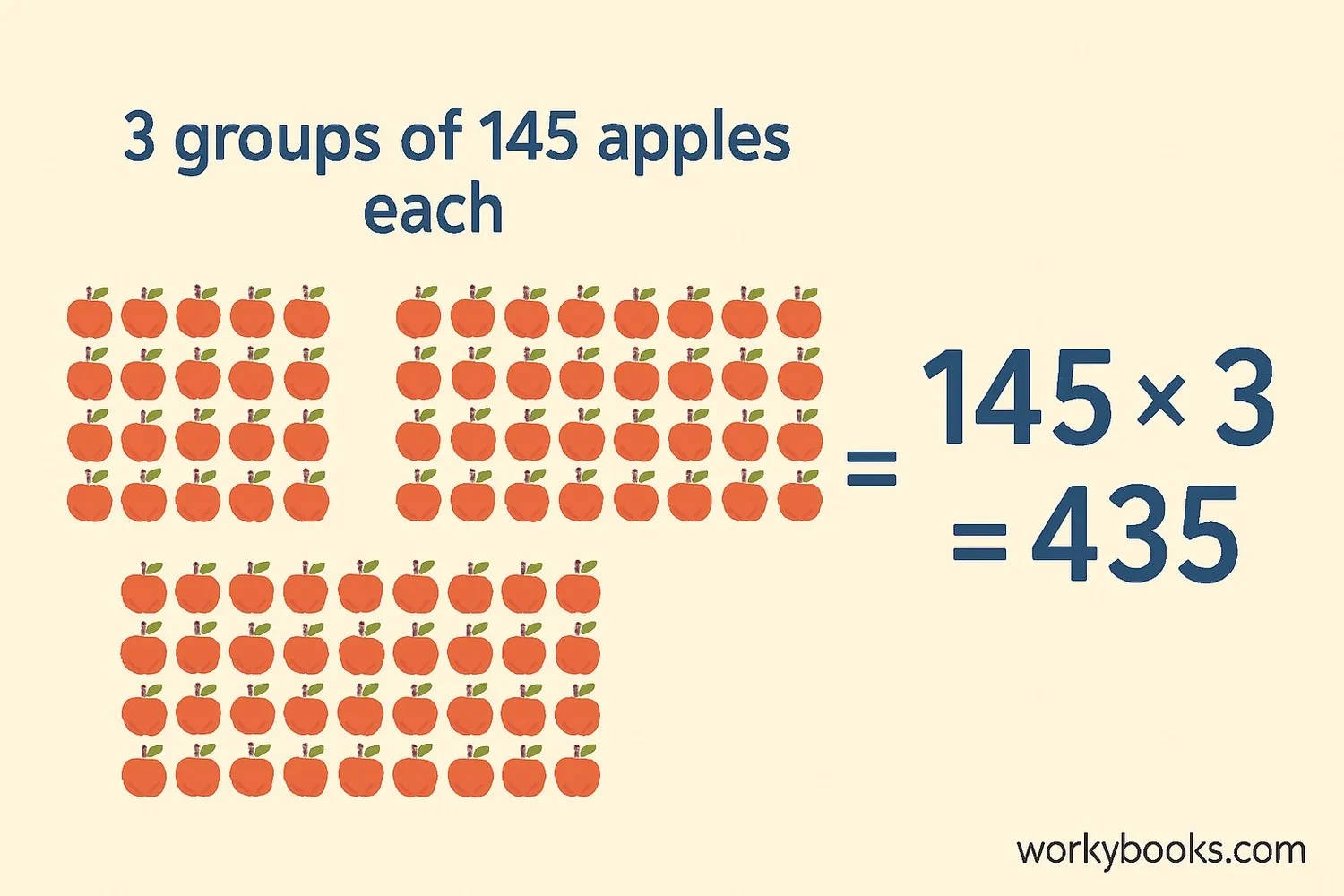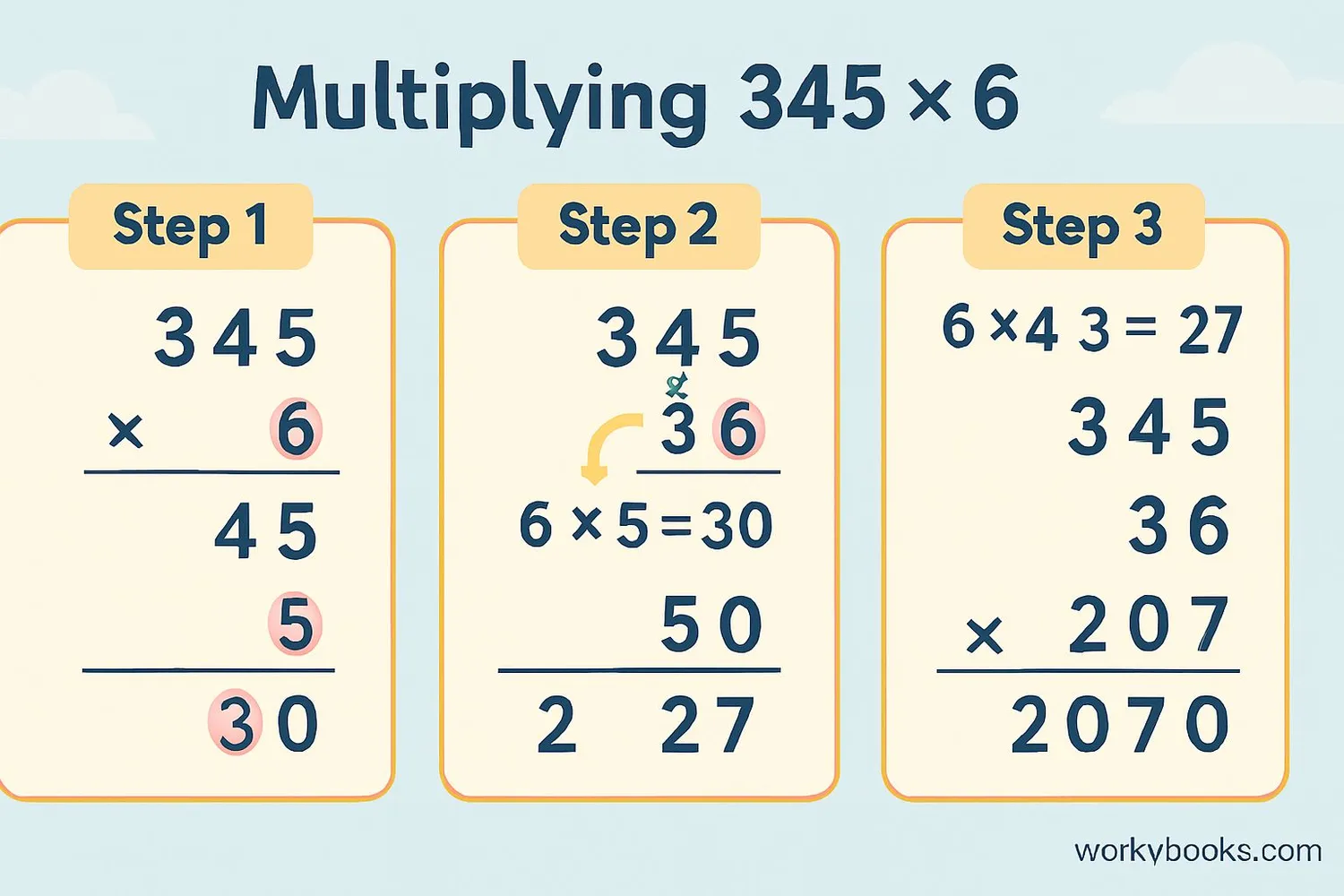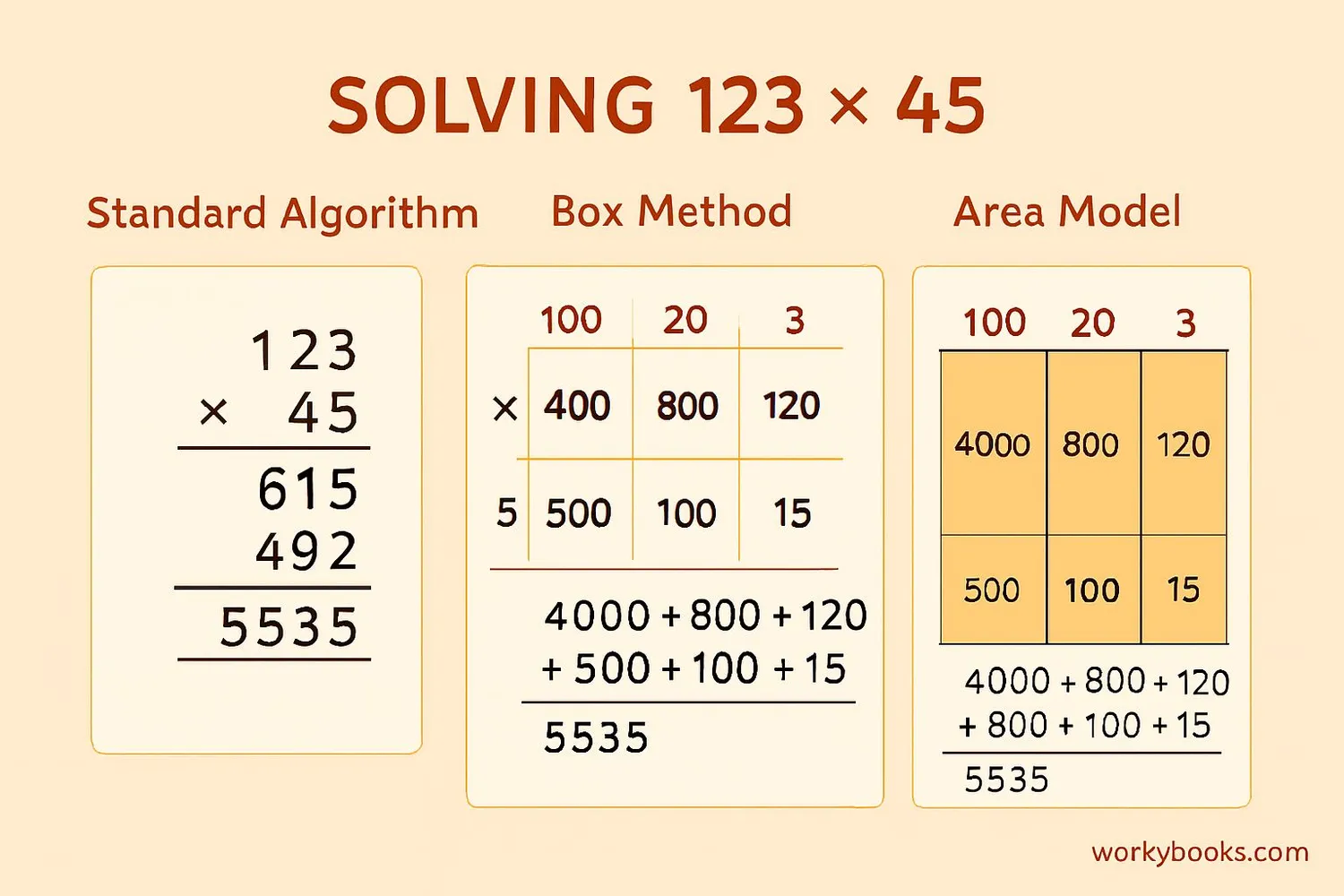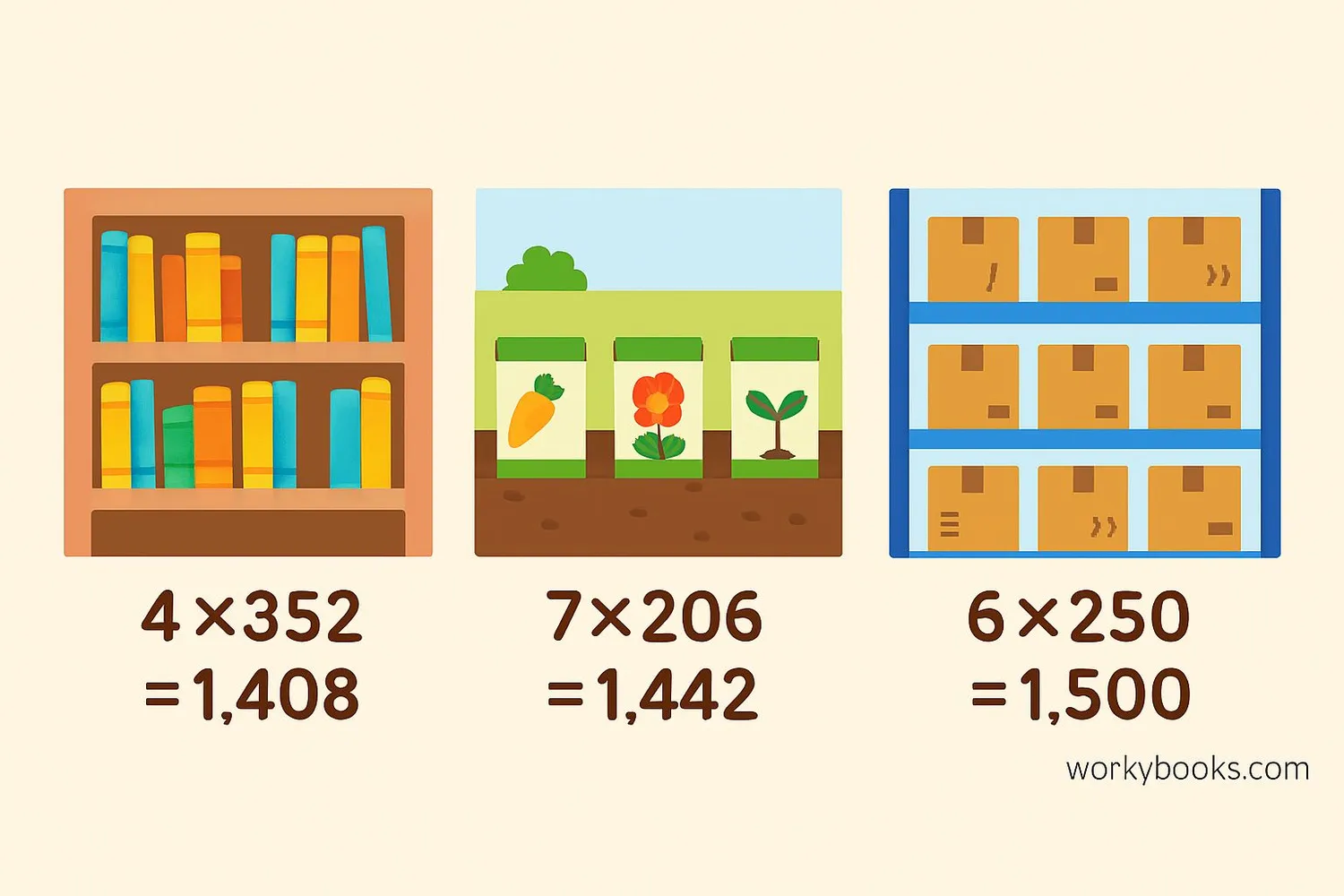3-Digit Multiplication - Definition, Examples, Quiz, FAQ, Trivia
Master multi-digit multiplication with step-by-step guides, visual methods, and practice activities
What is 3-Digit Multiplication?

3-digit multiplication means multiplying numbers that have three digits. This is an important math skill that helps us solve real-world problems involving larger quantities.
For example, if one box contains 125 books and a school orders 4 boxes, we need to multiply 125 × 4 to find the total number of books. This is 3-digit by 1-digit multiplication.
As we advance, we learn to multiply 3-digit numbers by 2-digit numbers (like 345 × 12) and even 3-digit by 3-digit numbers (like 234 × 567). Mastering these skills builds a strong foundation for more advanced math.
Key Concept
3-digit multiplication follows the same principles as smaller multiplication problems, but requires careful placement of numbers and sometimes regrouping.
How to Multiply 3-Digit Numbers

Let's learn how to multiply a 3-digit number by a 1-digit number using the standard algorithm. We'll use the example: 345 × 6.
× 6
--------
345
× 6
--------
0
345
× 6
--------
70
345
× 6
--------
2070
Remember
Always start multiplying from the rightmost digit (ones place) and move left. Don't forget to add any numbers you carried over!
Multiplication Methods

There are several methods to multiply 3-digit numbers. Let's explore three popular approaches:
Standard Algorithm
The traditional method most people learn, where you multiply digit by digit from right to left, carrying over as needed. This method is efficient for paper calculations.
× 12
--------
690 (345 × 2)
+3450 (345 × 10)
--------
4140
Box Method
Also called the partial products method. Break numbers into place values (hundreds, tens, ones) and multiply each part separately before adding the results.
× 10 + 2
-----------
(300×10)=3000
(300×2)=600
(40×10)=400
(40×2)=80
(5×10)=50
(5×2)=10
-----------
Total: 3000+600+400+80+50+10=4140
Area Model
Visual method using a rectangle divided into sections. The area of the whole rectangle represents the product. Great for visual learners!
- 300×10 = 3000
- 300×2 = 600
- 40×10 = 400
- 40×2 = 80
- 5×10 = 50
- 5×2 = 10
Total area: 4140
Tip
Try different methods to find which one works best for you. Many students find the box method and area model easier to understand at first.
Worked Examples

Let's solve some real-world problems using 3-digit multiplication:
Solution: 235 × 6 = ?
235
× 6
--------
1410
Answer: 1,410 cookies
Solution: 125 × 18 = ?
× 18
--------
1000 (125 × 8)
+1250 (125 × 10)
--------
2250
Answer: 2,250 books
Solution: 345 × 24 = ?
× 24
--------
1380 (345 × 4)
+6900 (345 × 20)
--------
8280
Answer: 8,280 toys
Practice Tip
Estimate your answer first to check if your final calculation makes sense. For 235 × 6, 200×6=1,200 and 35×6=210, so the total should be about 1,410.
Multiplication Practice Quiz
Test your 3-digit multiplication skills with this 5-question quiz. Choose the correct answer for each question.
Frequently Asked Questions
Here are answers to common questions about 3-digit multiplication:
Multiplication Trivia
Discover interesting facts about multiplication and numbers:
Ancient Multiplication
The ancient Egyptians used a method called "doubling" to multiply large numbers. They would repeatedly double one number and then add the appropriate doubles together.
Multiplication Record
The world record for mentally multiplying two 10-digit numbers is 28.58 seconds, set by Marc Jornet Sanz in 2020. Imagine multiplying such large numbers in your head!
Special Patterns
When you multiply 142,857 by 2, 3, 4, 5, or 6, you get results with the same digits in the same order: 285,714; 428,571; 571,428; 714,285; and 857,142. It's called a cyclic number!
Large Numbers
The largest number with a name is "googolplex" - that's 10 raised to the power of a googol (which is 1 followed by 100 zeros). You couldn't write out all the zeros in the observable universe!


